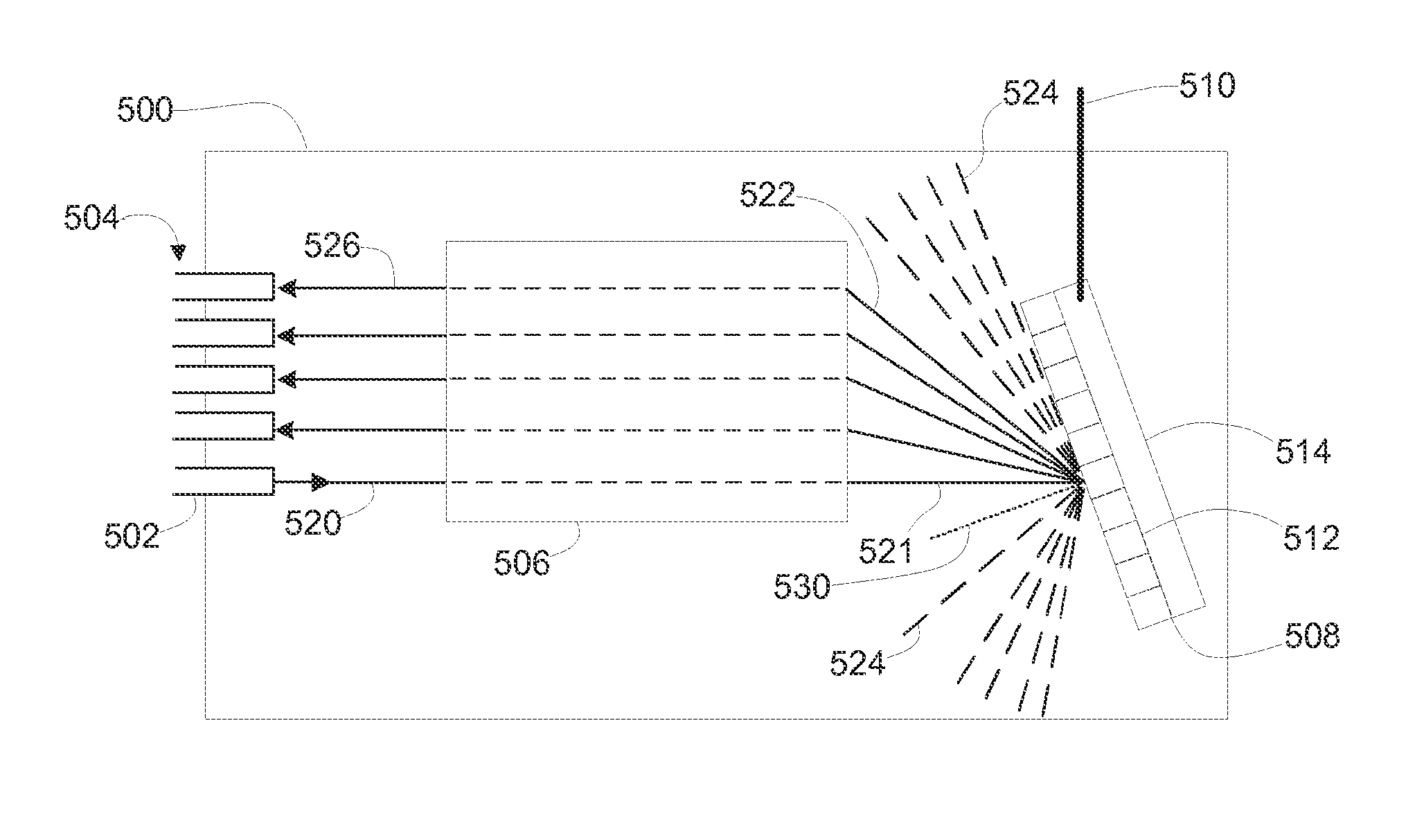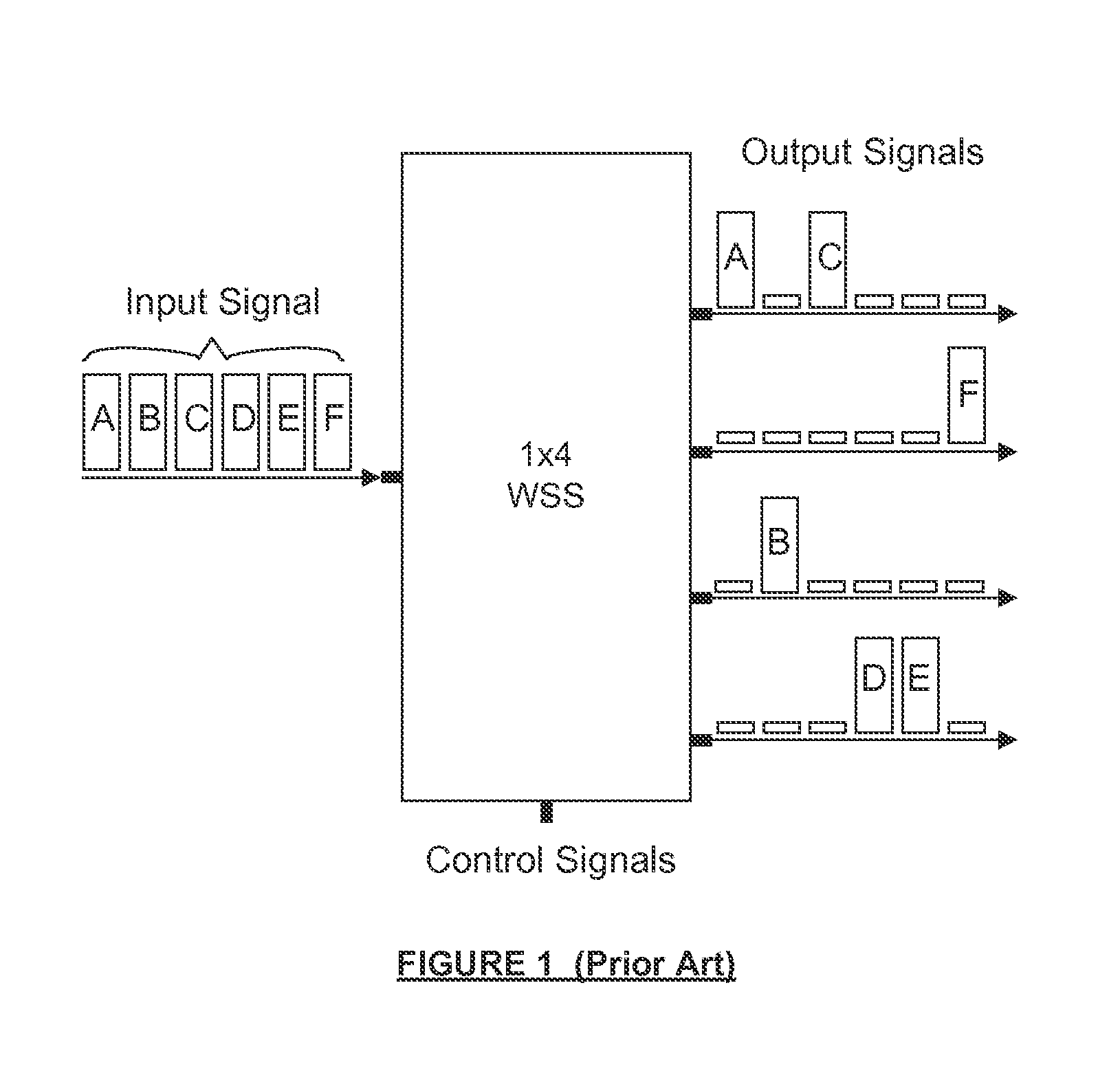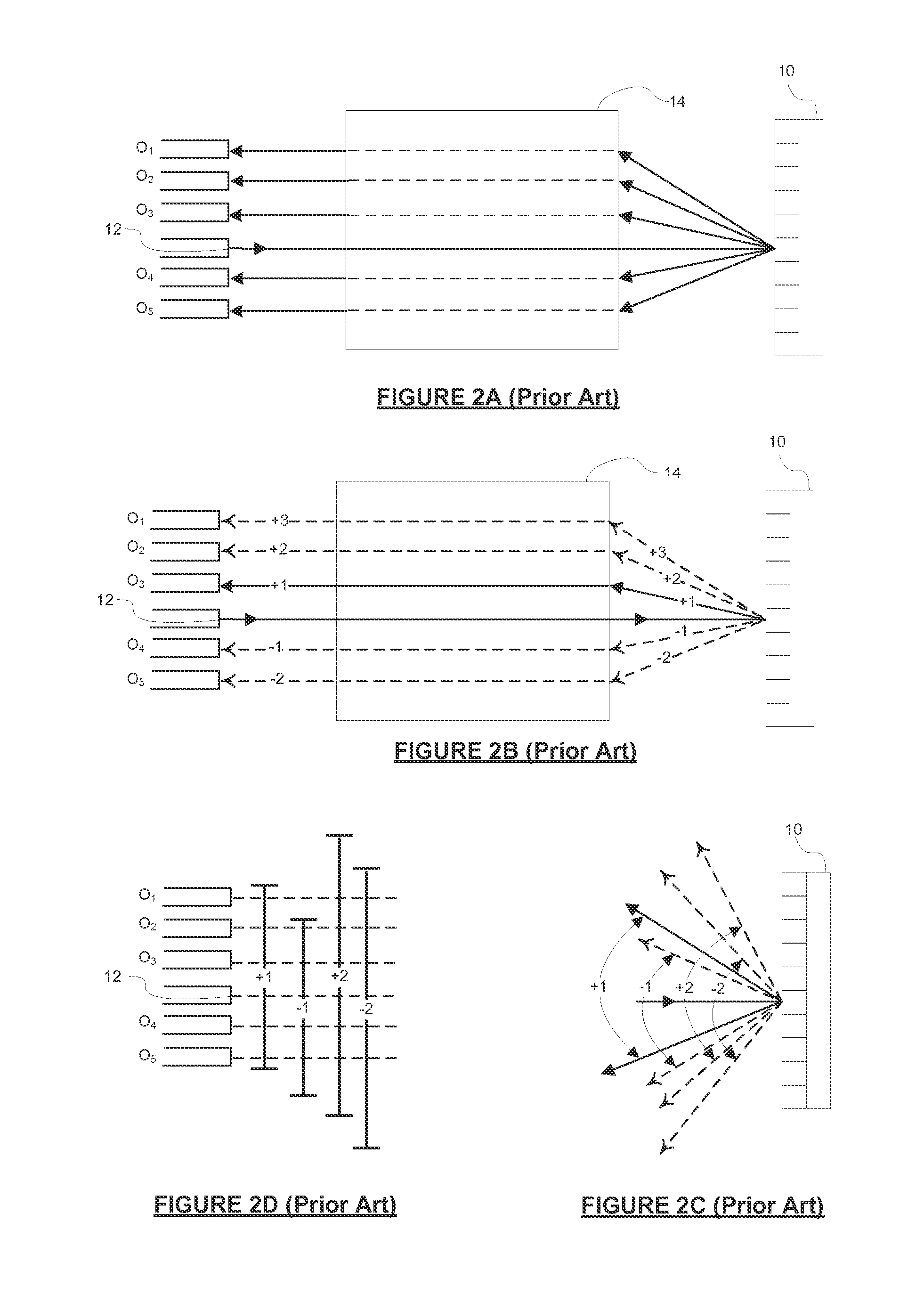Wss with high port isolation and close spaced ports
a technology of high port isolation and close spaced ports, which is applied in the field of optical wavelength selective switches, can solve the problems of not easily achieving high port isolation in a wss, significantly reducing port isolation, and not achieving high port isolation, so as to achieve efficient use of output optical aperture, complex calibration and control, and increase port isolation
- Summary
- Abstract
- Description
- Claims
- Application Information
AI Technical Summary
Benefits of technology
Problems solved by technology
Method used
Image
Examples
Embodiment Construction
[0036]The present disclosure applies to wavelength selective switches (WSSs) having phased array switching engines, and more specifically, how those WSSs can be configured for high port isolation.
[0037]A phased array switching engine comprises an array of cells each of which receives an incident wavelength channel of light and imparts to it a programmable phase shift or tilt. When the phased array switching engine (PASE) comprises LCOS cells, the phase shift of a cell is controlled by varying the electrical voltage across a liquid crystal fluid. When the PASE comprises an array of tilting MEMS mirrors, each cell comprises a mechanical mirror in which each direction of tilt is controlled by varying the electrical voltage on the sides of the MEMS mirror aligned with the direction of tilt. The PASE may also comprise a matrix of cells, or an array of PASEs may be provided for multi-dimensional, M×N optical WSSs. For simplicity of explanation, and unless otherwise noted, the present disc...
PUM
 Login to View More
Login to View More Abstract
Description
Claims
Application Information
 Login to View More
Login to View More - R&D
- Intellectual Property
- Life Sciences
- Materials
- Tech Scout
- Unparalleled Data Quality
- Higher Quality Content
- 60% Fewer Hallucinations
Browse by: Latest US Patents, China's latest patents, Technical Efficacy Thesaurus, Application Domain, Technology Topic, Popular Technical Reports.
© 2025 PatSnap. All rights reserved.Legal|Privacy policy|Modern Slavery Act Transparency Statement|Sitemap|About US| Contact US: help@patsnap.com



